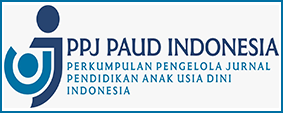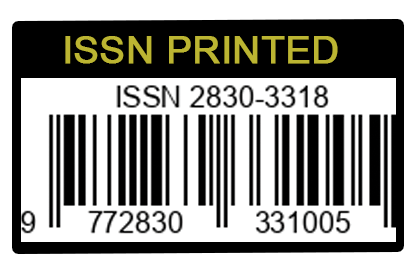Implementasi Pendidikan Inklusif Bagi Anak Autisme
DOI:
https://doi.org/10.53398/arraihanah.v5i1.621Keywords:
Autism; , Early Childhood Education; , Inclusive Education; , Inclusion; , Special Needs Children;Abstract
This study aims to describe the implementation of inclusive education for children with autism at TK Harsya Ceria. A qualitative approach with descriptive research type was used. The subjects of the study were teachers and parents, while the object was the implementation of inclusive education for autistic children. Data collection techniques included observation, interviews, and documentation. Data analysis used the interactive model of Miles and Huberman, consisting of data reduction, data display, and conclusion drawing. The results showed that TK Harsya Ceria had implemented inclusive education by adapting learning to the specific needs of students, particularly by focusing on sensory stimulation. The school provided an environment that supports the development of children with autism through a flexible, child-centered learning approach. In conclusion, the implementation of inclusive education at TK Harsya Ceria is fairly effective and provides opportunities for children with autism to develop optimally according to their abilities
References
Ainscow, M. (2020). Promoting inclusion and equity in education: Lessons from international experiences. Routledge.
Booth, T., & Ainscow, M. (2016). The Index for Inclusion: Developing learning and participation in schools (3rd ed.). Centre for Studies on Inclusive Education (CSIE).
Budiyanto, C., et al. (2020). Indonesian Educators' Knowledge and Beliefs about Teaching Children with Autism. Athens Journal of Education, 7(1), 57-74.
Febrian, A., & Widavant, R. (2015). Understanding Autism: A Study on Early Childhood Teachers in Indonesia. Journal of Early Childhood Education, 3(2), 45-53.
Florian, L., & Black-Hawkins, K. (2011). Exploring inclusive pedagogy. British Educational Research Journal, 37(5), 813–828. https://doi.org/10.1080/01411926.2010.501096
Hasugian, W., et al. (2019). Education for Children with Special Needs in Indonesia. Journal of Physics: Conference Series, 1175(1), 012172.
Humaira, H., et al. (2021). Implementasi Pendidikan Inklusif di Sekolah Dasar. Jurnal Pendidikan Inklusif, 5(1), 12-20.
Karst, J. S., & Van Hecke, A. V. (2012). Parent and family impact of autism spectrum disorders: A review and proposed model for intervention evaluation. Clinical Child and Family Psychology Review, 15(3), 247–277. https://doi.org/10.1007/s10567-012-0119-6
Kiling, I., et al. (2019). Challenges in Implementing Inclusive Education in Indonesia. International Journal of Inclusive Education, 23(1), 1-15.
Koegel, L. K., Ashbaugh, K., Koegel, R. L., Detar, W., & Regester, A. (2020). Increasing socialization in children with autism spectrum disorder using peer-mediated pivotal response treatment. Journal of Autism and Developmental Disorders, 50(2), 580–590.
Kurniawati, F. (2021). The Implementation of Inclusive Education in Indonesia: Challenges and Achievements. International Journal of Whole Schooling, 17(1), 1-18.
Lazar, F. L. (2020). Pentingnya Pendidikan Inklusif Bagi Anak Berkebutuhan Khusus. Pebdidikan Dan Kebudayaan Missio, 12(2), 105–106.
Loreman, T., Deppeler, J., & Harvey, D. (2019). Inclusive education: Supporting diversity in the classroom (3rd ed.). Routledge.
Masruroh, S., & Hendriani, W. (2022). Inclusive Education in Rural Indonesia: Challenges and Opportunities. Journal of Educational Research, 10(2), 100-110.
Matha, D. (n.d.). Manajemen Sarana dan Prasarana Pendidikan Inklusif Anak Usia Dini. Pendidikan Anak USia Dini.
Miles, M. B., & Huberman, A. M. (2014). Qualitative Data Analysis: A Methods Sourcebook (3rd ed.). SAGE Publications.
Ningrum, H. S. (2024). Pelaksanaan Pendidikan Inklusi ABK Autisme di SDN Sungai Andai 3. Jurnal Maras, 6(1), 45-56.
Nuruddin, M., & Rasidi, R. (2023). Local Contexts in Implementing Inclusive Education Policies in Indonesia. Journal of Educational Policy
Putri, N. L. (2015). Pendidikan Inklusif Anak Usia Dini Berkebutuhan Khusus.
Putri, R. H. (2015). Pendidikan inklusif: Konsep dan implementasinya di sekolah dasar. Jurnal Ilmiah Pendidikan Khusus, 6(2), 55–64.
Salisbury, C. L., Gallucci, C., Palombaro, M. M., & Peck, C. A. (2020). Strategies that promote inclusive practices in early childhood education. Topics in Early Childhood Special Education, 40(3), 133–145.
Sugiyono. (2017). Metode Penelitian Pendidikan: Pendekatan Kuantitatif, Kualitatif, dan R&D. Alfabeta.
Syifa, D. (2024). Mengenal Anak Bekebutuhan Khusus : Autisme Dan Ahd. Jurnal Almurtaja : Jurnal Pendidikan Islam Anak Usia Dini, 3(1), 15.
UNESCO. (2020). Inclusion and education: All means all. Global education monitoring report 2020. https://unesdoc.unesco.org/ark:/48223/pf0000373718
Wong, C., et al. (2015). Evidence-based practices for children, youth, and young adults with Autism Spectrum Disorder. Journal of Autism and Developmental Disorders, 45(7), 1951–1966.
Yahya, R. E. (2023). Memahami Anak Autis Dan Penerapan Model Pembelajran. Seminar Nasional Sosial Sains,Pendidikan,Humaniora (SENASSDRA), 2(2), 49.
Downloads
Published
How to Cite
Issue
Section
License
Copyright (c) 2025 Ar-Raihanah: Jurnal Pendidikan Islam Anak Usia Dini

This work is licensed under a Creative Commons Attribution-NonCommercial-ShareAlike 4.0 International License.







.png)




